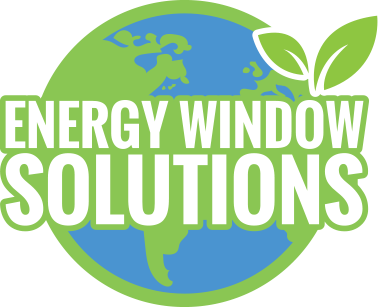
What Makes Energy Efficient Windows What They Are? | Flower Mound, TX
Photo By Franck Boston at Shutterstock
As the cost of living gets more expensive, many local homeowners want to find ways to save money on their utility bills. Updating the windows in your home is a great way to reduce your energy expenditure long-term.
Energy efficient windows help to minimize the amount you spend on electricity and heating bills and can even increase your property’s value. So, what makes windows energy efficient?
How Are Energy Efficient Windows Measured?
When you’re looking for these windows in Flower Mound, TX, it’s important to understand what performance criteria they have to meet. The National Fenestration Rating Council assesses energy efficient windows and awards models that meet its criteria an Energy Star label so that you can spot them easily.
The National Fenestration Rating Council checks for the following 5 criteria:
1. U-Factor
The U-Factor measures how much energy a window loses. The lower the U-Factor, the lower the heat loss and the better the window’s insulation. Generally, triple-pane windows offer the lowest U-Factor, followed by double-pane models.
2. Solar Heat Gain Coefficient
The Solar Heat Gain Coefficient (SHGC) measures how much solar energy a window allows into your home. The lower the SHGC, the more solar heat the window can block.
SHGC is measured on a scale of 0 to 1. Most windows score somewhere between 0.25 and 0.80.
3. Visible Transmittance
A window’s Visible Transmittance score refers to the amount of light it allows through. This is also measured on a scale from 0 to 1, and most windows score somewhere between 0.20 and 0.80.
4. Condensation Resistance
The National Fenestration Rating Council scores windows on a score of 1 to 100 for Condensation Resistance. This score reflects how well the window resists water build up. The higher the score, the better the resistance to condensation.
5. Air Leakage
This criteria measures how much air can travel through one square foot of window area each minute in cubic feet. The lower the air leakage rating, the more energy efficient the window.
What to Look for in Energy Efficient Windows
Whether a window is energy efficient or not doesn’t just depend on the glass used. You should also consider the type of frame or sash and the spacers. Here’s what to look out for when you’re searching for energy efficient windows for your home.
Efficient Glass
Glass alone doesn’t insulate your home very well and isn’t especially energy efficient. However, recent technological developments have created low-emissivity glass, sometimes known as Low-E glass.
This type of glass features a special coating that reflects the ultraviolet and infrared rays in sunlight. It also helps to protect your furniture, upholstery, and wallpaper from fading due to sunlight exposure.
It’s also a good idea to look for multi-pane windows. Old-style single pane windows are not good at insulating your home. Windows with two panes or more are far more efficient. Manufacturers often fill the spaces between the panes with a safe gas like argon or krypton that helps to reduce energy transfer. This prevents heat escaping from your home, allowing you to save money on your utility bills.
Efficient Frames
There are various frame and sash choices available, and which one you choose depends on your local climate and the budget you have available. These include:
- Wood: Wood is the traditional material for window frames and sashes and is a decent choice for energy efficient windows because it is a good insulator. However, it can wear down reasonably quickly in harsh climates unless it has a protective coating.
- Fiberglass: Fiberglass is a durable and low maintenance option, especially if you live in a climate with harsh weather conditions. You can fill hollow fiberglass frames with foam insulation to reduce energy transfer.
- Aluminum: This material is a durable alternative to fiberglass and is easy to recycle when you replace your windows in the future.
- Vinyl: Vinyl is popular with many Flower Mound, TX homeowners because it is relatively inexpensive and can be filled with foam insulation to make it more efficient.
Efficient Spacers
Many people forget to consider the spacers when choosing windows that are energy efficient. Window spacers are brackets that hold the glass against the frame. Metal spacers are less energy efficient because they conduct heat. Windows with non-metallic spacers tend to be more energy efficient overall.
Which Energy Efficient Windows Should I Choose?
Windows come in a wide range of types and styles, including awning, double-hung, and casement models. Which ones you choose partly comes down to the aesthetic style you prefer. However, there are two main air seal types that you should be aware of if you want to choose the most energy efficient option.
Windows that swing outward or inward like awnings or casements are the most energy efficient because you pull or push them tightly up to the weatherstripping when you close them. Therefore, they have a tighter seal and allow less energy transfer than sliding windows like double-hungs. If you love the look of sliding windows, it’s worth considering combining them with some swing windows as well to boost your home’s overall energy performance.
It’s also important to bear in mind your local climate when choosing windows for your home. Energy Star recommendations split the United States into four zones depending on the window properties you need according to your environment. Make sure that you choose energy efficient windows certified for your Energy Star zone. However, your installer should also take your home’s unique features and situation into account.
The Bottom Line
Energy efficient windows will only perform well and lower your energy bills if you have them installed properly. The expert team at Energy Window Solutions can help you choose the best windows to insulate your home and install them correctly so that you can enjoy an energy efficient home for many years to come.


